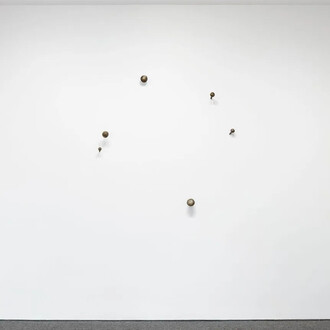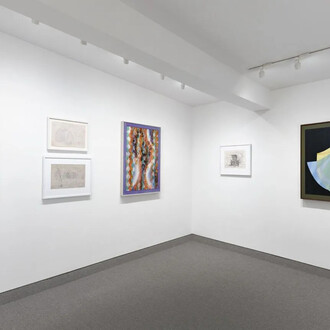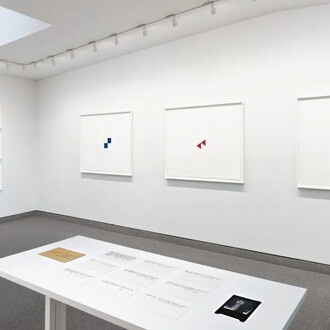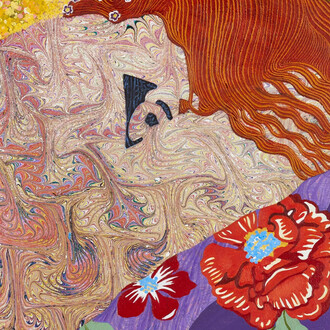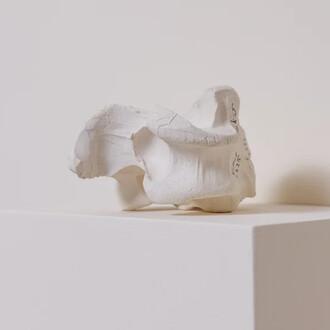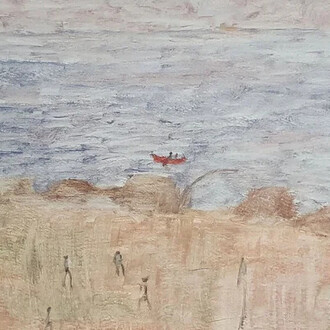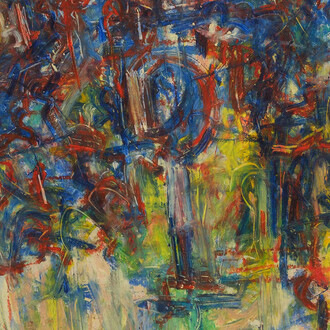50 years ago, Robert Feldman and his publishing imprint Parasol Press embarked on a project with the aim of creating something akin to a “print of the month” club. While this idea seemingly would cater to mass appeal, Parasol Press had become known in the previous five years for being among the most adventuresome print publishers, producing works with Mel Bochner, Sol LeWitt, Brice Marden, Agnes Martin, Dorothea Rockburne, and numerous others. In the end, subscribers received all thirteen prints together, not in installments, and the Rubber Stamp Portfolio, as it has become known, offered a snapshot of the New York-centered avant-garde at that moment in time.
Under Feldman, Parasol, with the project managed by Carol Androccio (later Carol LeWitt), worked with thirteen different artists to create works, each of which would be a custom-engraved rubber stamp to be inked and printed on paper as an original, limited-edition artist print. Each work was done in an edition of 1000, with each artist approaching the project with their own vision. Ultimately, several deviated dramatically from the single stamp principle, yet each in ways that reflected the exigencies of their practices. Feldman’s idea intrigued the Museum of Modern Art and their publications department so greatly that the museum requested to be, for a period of one year, the exclusive distributor for the portfolio.
The thirteen artists, whose participation mostly stemmed from Feldman’s early relationships to the Bykert and Allan Stone galleries, expanded beyond any particular boundaries, to include: Carl Andre, Richard Artschwager, Daniel Buren, Chuck Close, Barry Le Va, Sol LeWitt, Agnes Martin, Robert Mangold, Don Nice, Sylvia Plimack Mangold, Myron Stout, Tom Wesselmann, Joe Zucker.
The works range from as reductive as possible (Carl Andre’s work consisted of a piece of paper being stamped with a number from 1 to 1000, and thus the “image” was also the edition numbering of that impression) to opulent full-color imagery (Wesselmann’s required ten stamps). Some artists were deeply involved in paper choice (e.g. Sylvia Plimack Mangold), while others left the decision up to Parasol Press. More information for each piece is available on the exhibition’s webpage under each work.
This retrospective look at the Rubber Stamp Portfolio is the first time the entire suite and the existent archive of the whole project (correspondence, proofs, the rubber stamps used to make the works, etc.) has ever been exhibited. It is the second of a three-part series of exhibitions at Krakow Witkin Gallery that highlights and honors the efforts of Bob Feldman and Parasol Press. The series began with this past spring’s presentation of Agnes Martin’s 1973 project, On a clear day and will continue in the fall with an exhibition of Mel Bochner’s editioned works from the 1970s. In 2026, the Addison Gallery of American Art will mount a survey of Parasol Press’s entire history curated by Rachel Vogel. A section of this exhibition (focusing on the 1970s) will subsequently travel to the Print Center New York.
A few impressions of each artist’s contribution are available for sale. In addition, one complete suite of the thirteen prints is available to purchase.
Krakow Witkin Gallery would like to thank the family of Bob Feldman as well as Rachel Vogel and Carol LeWitt for their generous contributions of time, insight, enthusiasm, and support.





